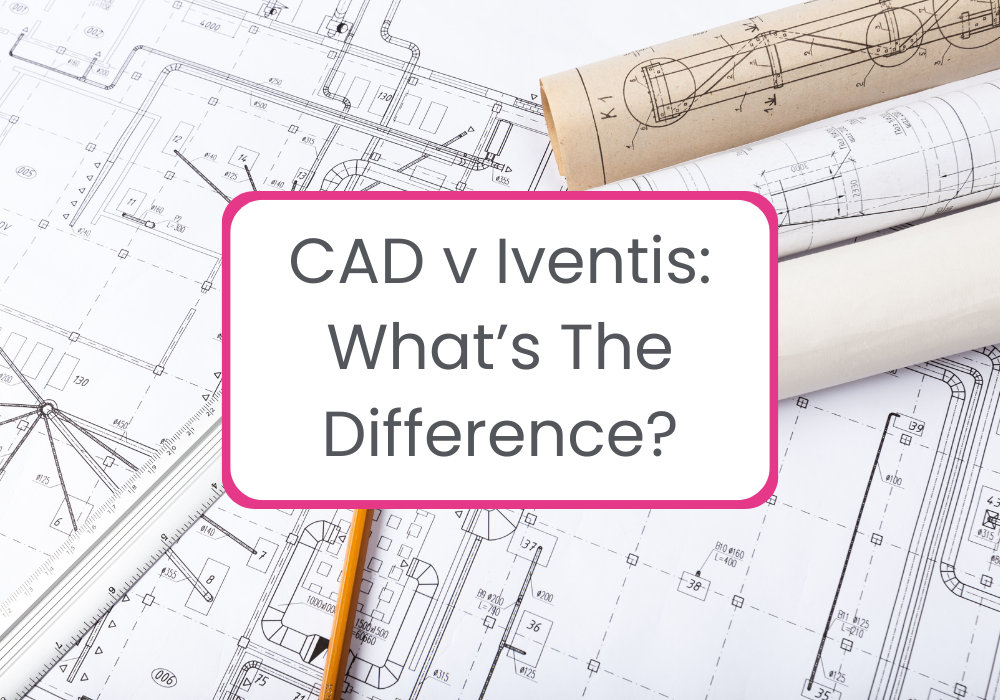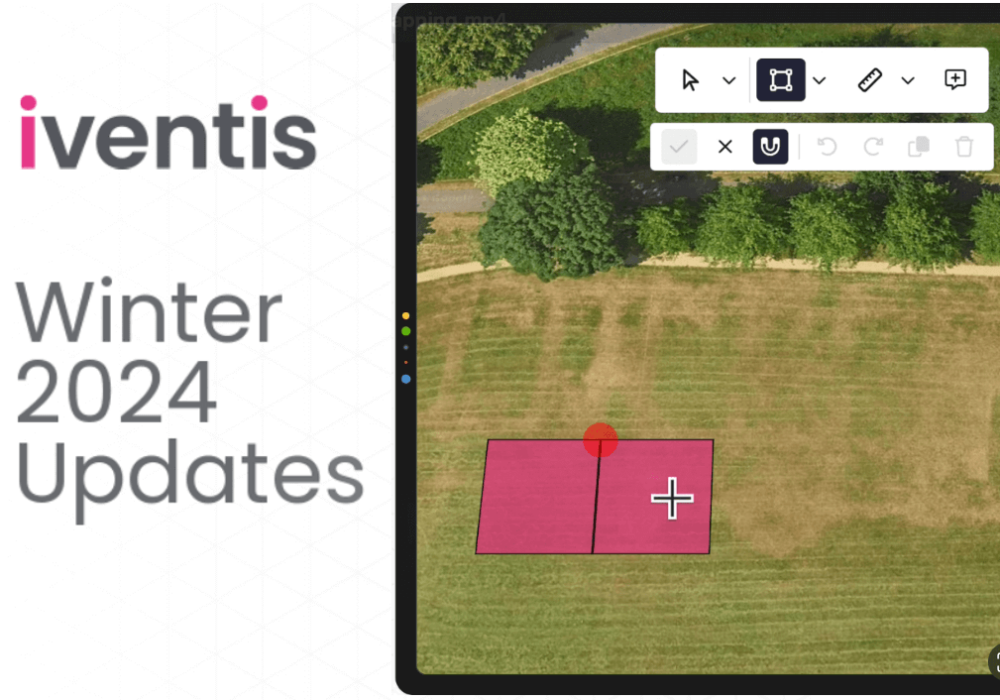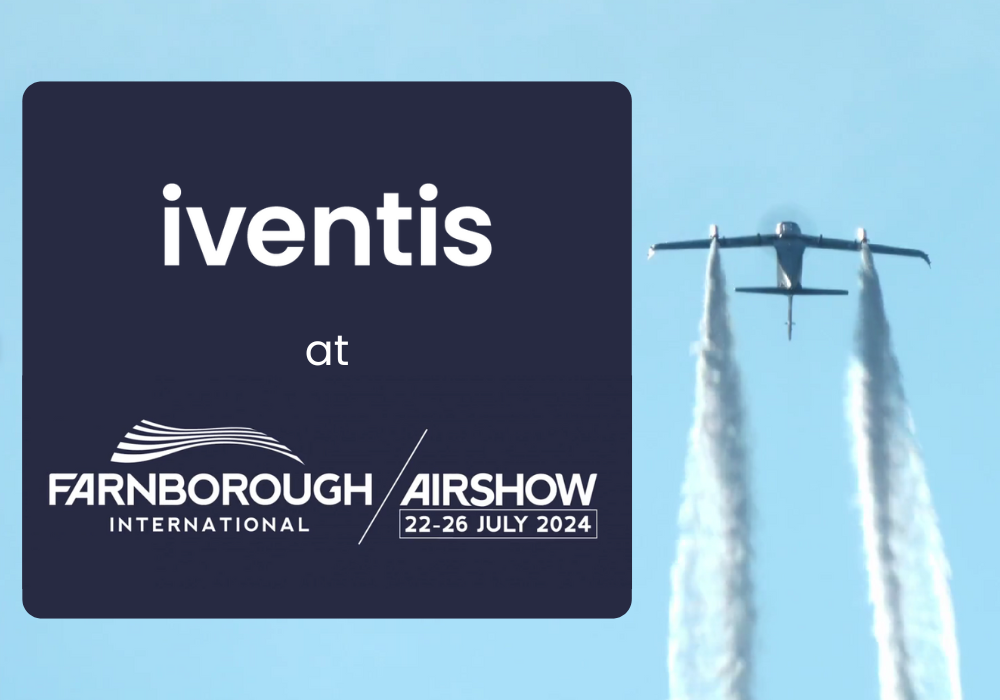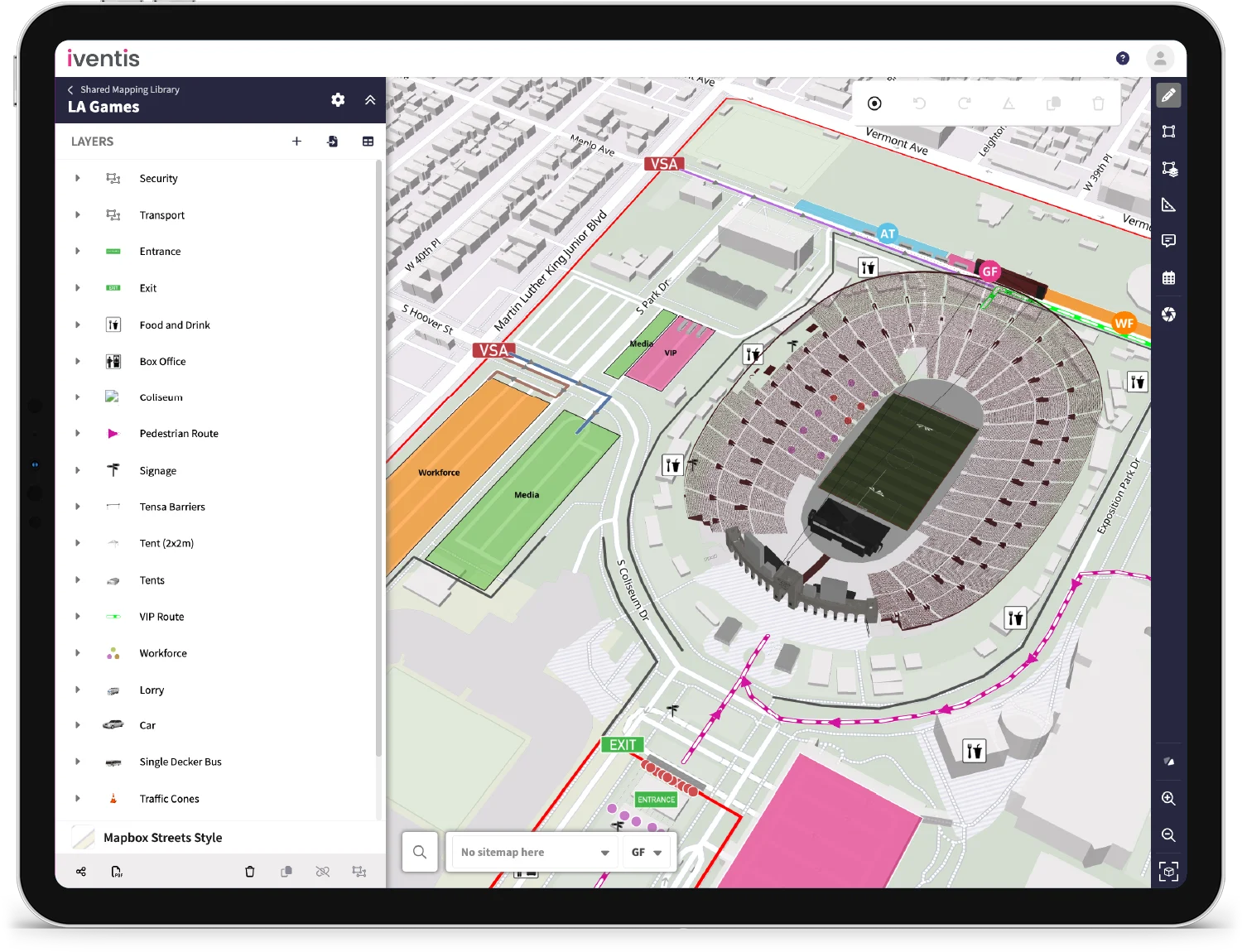In the events space, CAD software plays an important role for providing in-depth information about venues and spaces. Organisers might use platforms such as AutoCAD, VectorWorks and many others to aid in their event mapping.
As a map-based visual event and venue planning software, Iventis is frequently compared to CAD in terms of its capabilities. We’re often asked whether we’re an alternative to CAD, or if CAD is necessary to get the most from Iventis.
To understand the difference between the Iventis Planner and CAD – and how they can be used together – read on.
What is CAD?
Computer-aided design (CAD) is a type of technology that has been in use since the 1970s. It is said to have marked a digital evolution for architectural and engineering design. The technology replaced the need for hand-drawn designs drafted on drawing boards.

General Motors technical centre in Warren, Michigan. Image from www.rarehistoricalphotos.com
Given its origins, CAD drawings are specifically designed for creating precise, technical diagrams and measurements. As a result, the software is complex to learn and is most commonly used by professionals like architects, engineers, and specialists who need its detailed capabilities.
How is CAD used in the events industry?
Events often require infrastructure, whether that’s temporary or permanent. From marquees to bandstands, stages to entire arenas, each event has its own requirements. For the more complex of these, CAD must ensure that designs are clear and accurate for planning approval, construction or alignment with health and safety or public event requirements, such as rigging weight bearing.
For less complex events, or those which are taking place using established infrastructure such as an existing venue, a venue’s CAD is often used as a starting point to plan temporary infrastructure or operational aspects through overlay. These might include structures like marquees and grandstands, but often include operational elements such as ingress and egress, fire safety and emergency access routes, security positioning and more.
However, planning these elements on CAD software requires the user to understand how to navigate the platform, which often requires a specialist. Event organisers may need to outsource this work or employ a CAD professional, but either method can quickly create bottlenecks as they rely on an individual or a small group to process every aspect of the overlay.
Too much information?
Event professionals frequently grapple with the decision between tackling complex, technical software or getting by with more user-friendly and accessible tools that aren’t necessarily fit for purpose. The dilemma typically boils down to a choice: using CAD or opting for simpler, more generalised methods.
For many event planning aspects, CAD software provides an unnecessary amount of detail. However, there has not historically been a viable alternative. So, organisers are forced to learn and navigate the software – even if they’re only using a fraction of its capabilities. These individuals are not typically architects or engineers, making CAD expensive to maintain, especially when used at a basic level.
To circumvent this, event organisers often turn to universally accessible, general-purpose software such as Microsoft Office, Canva or Google Maps. Contrary to CAD, these platforms often lack the necessary detail for accurate event planning. This then leaves the organiser obliged to manually ensure that everything is accounted for.
As these platforms are often used to plan a specific element of an event – using Google Maps for route planning or PowerPoint for drawing site plans, for example – organisers end up with fragmented plans across a range of platforms. This creates inconsistencies between different functional areas and can lead to difficulties in managing version control.
These options sit at either end of the spectrum, and there hasn’t been a sufficient solution to bridge the gap for event organisers. However, Iventis was designed to fill this void. It provides a specialised platform that equips event professionals with the tools they need, in one platform.
Iventis: Sitting in the sweet spot
Iventis was developed to make operational event planning more accessible, freeing up organisers to spend less time navigating CAD complexities without compromising on the output quality. This offers several key benefits, including improved collaboration, cost savings and enhanced spatial planning.
Built-in collaboration
While it is not a CAD platform, Iventis works with CAD drawings to provide an easier method for overlaying. Once a CAD is created, it can be uploaded directly into the web-based platform. Here, the CAD can be used as a basis for every stage of operational planning. This removes the bottleneck from CAD professionals, as they no longer need to individually add information from every functional area – every team can create and edit their own aspects.
Streamlining costs
For many events, this means that organisers no longer have to pay for CAD subscriptions throughout the planning phase. Instead, they can cancel the subscription once the CAD drawings have been uploaded into the Iventis Planner, and from then on in, they can rely on Iventis for all subsequent planning. As CAD software is incredibly specialised, it comes at a premium – so this method can save considerable costs.
Geospatial planning
Iventis also brings the benefit of geospatial planning to CAD. Individual CAD drawings are isolated, so planing aspects such as ingress and egress, transport or city operations can be difficult. By uploading a CAD directly to the Iventis Planner, organisers can visualise the plan within its exact physical location. This helps to ensure that every element of the event can be planned in one place, streamlining the planning process and ensuring geographically accurate and feasible plans.
Your one-stop shop for event planning
CAD is a powerful, precise and important tool for many industries, and it has its place in the events industry. However, it has long been underutilised due to the absence of a viable alternative.
The Iventis Planner is not a CAD program. Instead, it complements CAD, provide a more visual, accessible and intuitive event planning experience. It brings the power of CAD to a much wider audience, delivering essential event planning functionality without the complexity of CAD’s highly specialised architectural detail.
What’s more, Iventis is always developing new features to enhance the platform for event organisers. Features designed to enable more accurate drawing, for example, are underway to further decrease reliance on CAD drawings.
If you want to find out more about how the Iventis Planner can work alongside your CAD software – or potentially even replace it – book a demo with one of our experts.





